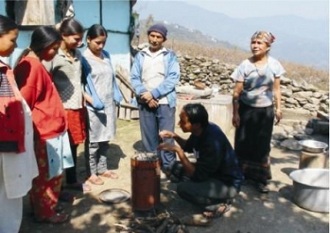Field Testing of Alternative Cookstove Performance in a Rural Setting of Western India. International Journal of Environmental Research and Public Health, Feb 2015.
Authors: Veena Muralidharan , Thomas E. Sussan, et al.
Nearly three billion people use solid fuels for cooking and heating, which leads to extremely high levels of household air pollution and is a major cause of morbidity and mortality. Many stove manufacturers have developed alternative cookstoves (ACSs) that are aimed at reducing emissions and fuel consumption. Here, we tested a traditional clay chulha cookstove (TCS) and five commercially available ACSs, including both natural draft (Greenway Smart Stove, Envirofit PCS-1) and forced draft stoves (BioLite HomeStove, Philips Woodstove HD4012, and Eco-Chulha XXL), in a test kitchen in a rural village of western India.
Compared to the TCS, the ACSs produced significant reductions in particulate matter less than 2.5 µm (PM2.5) and CO concentrations (Envirofit: 22%/16%, Greenway: 24%/42%, BioLite: 40%/35%, Philips: 66%/55% and Eco-Chulha: 61%/42%), which persisted after normalization for fuel consumption or useful energy. PM2.5 and CO concentrations were lower for forced draft stoves than natural draft stoves. Furthermore, the Philips and Eco-Chulha units exhibited higher cooking efficiency than the TCS. Despite significant reductions in concentrations, all ACSs failed to achieve PM2.5 levels that are considered safe by the World Health Organization.



